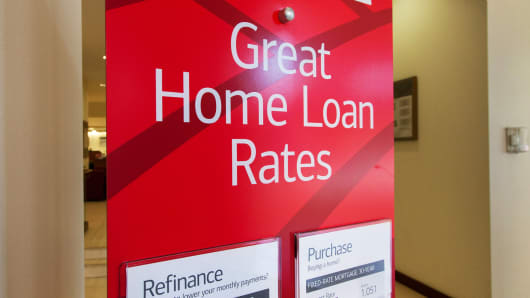Call it the End of the Great Refi Boom.
Lower interest rates used to spark stampedes of homeowners looking to save a few bucks—or pull some cash out of their home equity piggy bank.
But the recent sharp drop in interest rates is not expected to bring hoards of refinancers out of the woodwork. "The refinance boom is over," declared Freddie Mac chief economist Fred Nothaft in the agency's latest refinancing report on second-quarter mortgage volume.
The report noted—for the first time since rates began tumbling in 2008—more mortgages are being written for purchases than for refinancing.
But what a boom it was. Freddie Mac estimates since 2000, American borrowers saved some $70 billion in interest payments from home loan refinancings.
Early on, many of those were "cash-out" refinancings that tapped a rapidly expanding home equity piggy banks. But since the housing bust, Americans have been using refis to build up equity again, according to Freddie Mac data. In the first quarter of this year, for example, some 83 percent of refis were for the same—or smaller—loan balance. And roughly 2 out of 5 refinancers went for a shorter-term loan to pay off their mortgage sooner.
One big reason the boom is over: Most homeowners who can save by refinancing already have done so. Though the yield on a 10-year Treasury note has fallen from 3 percent to about 2.4 percent this year, it's still well above the 1.5 percent bargain basement trough reached two years ago. Those low rates sparked a surge of refinancing from homeowners who locked in rates lower than they would find today.
Read MoreBond yields hit lowest in over a year in wake of Fed minutes
"With mortgage rates remaining below 5 percent for the past four years, relatively few homeowners with loans taken in this period would have much incentive to refinance," said Freddie Mac's Nothaft.



